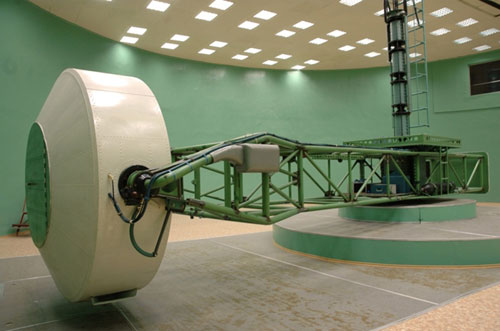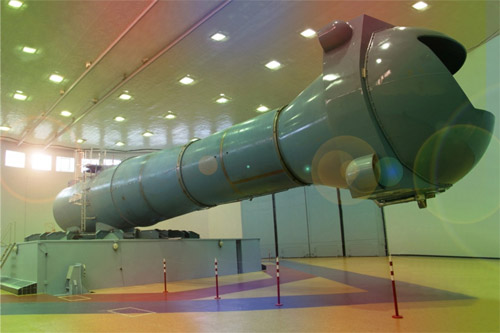Centrifuges and centrifuge-based simulators are used for improving cosmonauts’ G-tolerance capabilities. Improvement of a human body capability for adaptation to g-loads by means of objective training in a centrifuge is associated with displaying the latent mechanism of blood redistribution which triggers when blood circulation is distressed. When g-loads are applied regularly new behavior reflex links are formed in the operator’s central nervous system. These links activates when g-loads grow. Thus g-tolerance may be improved by 1.5-2 units.
The first centrifuge – CF-7 – was developed and put in operation in 1973. It was designed for performing the following tasks:
- To test g-tolerance during cosmonaut and pilot selection;
- To conduct studies of the influence of spaceflight extreme factors on a human body;
- To conduct medical studies on developing methods of how to improve the g-tolerance, reduce negative effects of acceleration, and predict the g-load capability of a human-being;
- To develop dynamic simulators of future vehicles;
- To test aeronautical and space engineering models.
Technical characteristics of the CF-7 centrifuge:
| Rotation radius | - 7 m |
| Maximum g-load | - 20 g |
| Maximum g-load rate | - 7 g/sec |
| Maximum angular rate | - 50,7 rpm |
| Actuator power: nominal | - 820 kW |
| starting | - 1280 kW |

At present the CF-7 simulator-centrifuge is used for cosmonaut candidate selection, training them within different programs, and pilots training for the purpose of the Air Force needs.
The second centrifuge - CF-18, intended for cosmonaut selection and training under the effect of simulated spaceflight factors, was put in operation in 1980. Linear G-loads, physiological weightlessness, reduced pressure, humidity and temperature variations, and air composition are simulated in the cabin of the centrifuge.
The CF-18 centrifuge consists of:
- Electric actuator;
- Tube-structured frame with counter-weight;
- Three changeable cabins (À, Â, Ä);
- Engineering and technological systems.
Technical characteristics of the CF-7 centrifuge:
| Mass of the centrifuge rotating elements | - 300 tons |
| Rotation lever radius | - 18 m |
| Maximum g-load | - 30 g |
| Maximum g-load gradien | - 5 g /sec; |
| Variations of pressure in a cabin | from 800 to 40 mmHg in 9 minutes |
| Variations of temperature in a cabin | from +5°Ñ to +50°Ñ |
| Variations of humidity in a cabin | îò 30 äî 70%; |
| Variations of percentage of the air composition in the cabin: | nitrogen - 56-83%; oxygen - 17-40%; hydrogen - 0-4% |

The CF-18 centrifuge has 3 changeable cabins (À, Â, Ä). Cabin A is used for different research and cosmonaut training and includes 2 work stations. Cabin B is intended for conduction specific medical investigations and includes X-ray equipment. Cabin Ä is intended for simulation exercises of a spacecraft control during descent phase and includes a mockup of a manned spacecraft work station.


